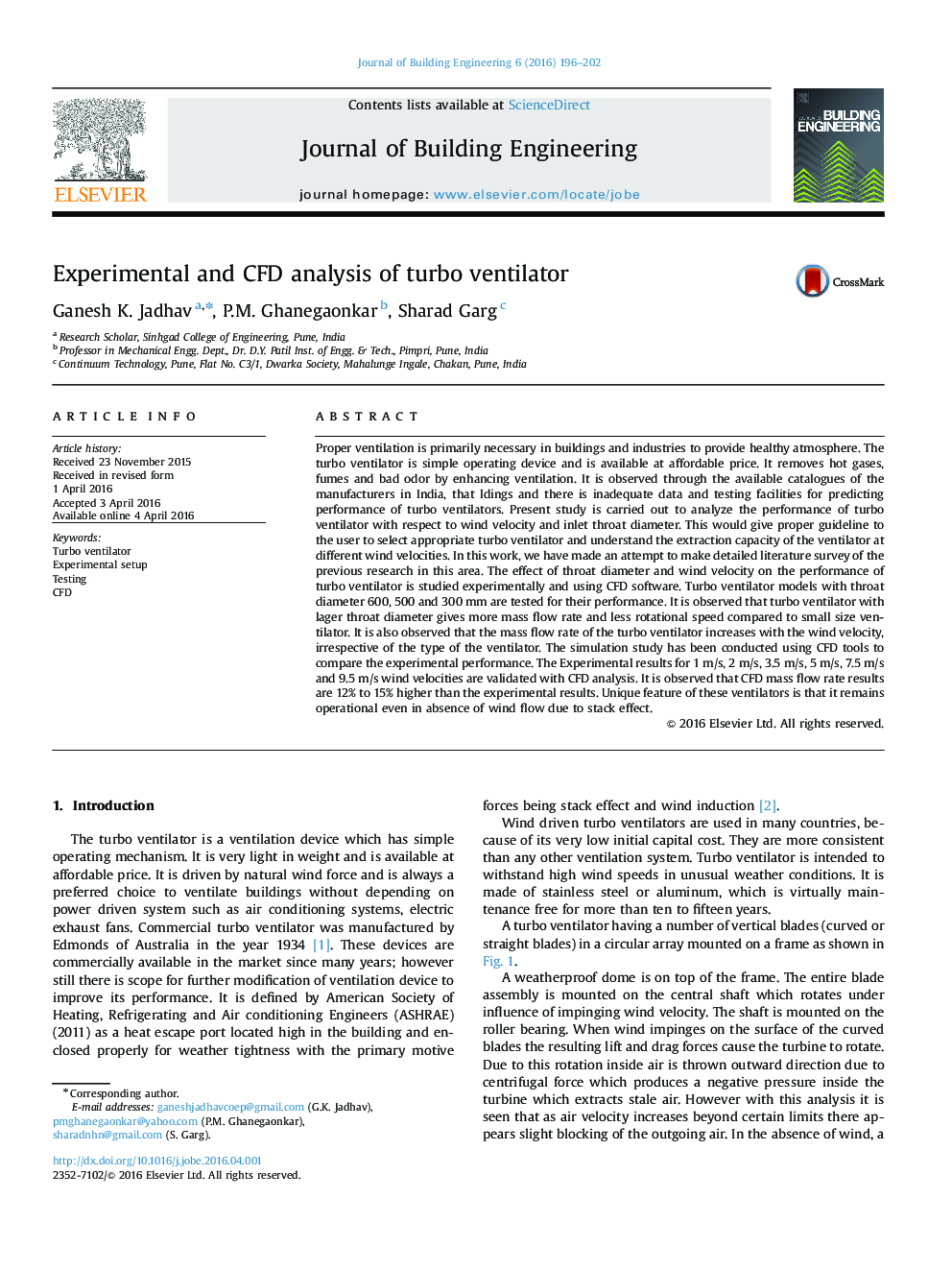| کد مقاله | کد نشریه | سال انتشار | مقاله انگلیسی | نسخه تمام متن |
|---|---|---|---|---|
| 283809 | 509116 | 2016 | 7 صفحه PDF | دانلود رایگان |
• The effect of throat diameter and wind velocity on the performance of turbo ventilator is studied experimentally and using CFD software.
• This would give proper guideline to the user to select appropriate turbo ventilator and understand the extraction capacity of the ventilator at different wind velocities.
• Turbo ventilator models with throat diameter 600, 500, 300 mm are tested for their performance.
• Mass flow rate is increasing with the rotational speed of turbo ventilator and after a certain speed it rate decreases due to wind barrier.
• Turbo ventilator with lager throat diameter gives the more mass flow rate comparative to small size ventilator.
• CFD results are validated with the results of the experiment results.
• The CFD results helped to study the internal as well as external flow around and in the turbo ventilator.
Proper ventilation is primarily necessary in buildings and industries to provide healthy atmosphere. The turbo ventilator is simple operating device and is available at affordable price. It removes hot gases, fumes and bad odor by enhancing ventilation. It is observed through the available catalogues of the manufacturers in India, that ldings and there is inadequate data and testing facilities for predicting performance of turbo ventilators. Present study is carried out to analyze the performance of turbo ventilator with respect to wind velocity and inlet throat diameter. This would give proper guideline to the user to select appropriate turbo ventilator and understand the extraction capacity of the ventilator at different wind velocities. In this work, we have made an attempt to make detailed literature survey of the previous research in this area. The effect of throat diameter and wind velocity on the performance of turbo ventilator is studied experimentally and using CFD software. Turbo ventilator models with throat diameter 600, 500 and 300 mm are tested for their performance. It is observed that turbo ventilator with lager throat diameter gives more mass flow rate and less rotational speed compared to small size ventilator. It is also observed that the mass flow rate of the turbo ventilator increases with the wind velocity, irrespective of the type of the ventilator. The simulation study has been conducted using CFD tools to compare the experimental performance. The Experimental results for 1 m/s, 2 m/s, 3.5 m/s, 5 m/s, 7.5 m/s and 9.5 m/s wind velocities are validated with CFD analysis. It is observed that CFD mass flow rate results are 12% to 15% higher than the experimental results. Unique feature of these ventilators is that it remains operational even in absence of wind flow due to stack effect.
Journal: Journal of Building Engineering - Volume 6, June 2016, Pages 196–202
